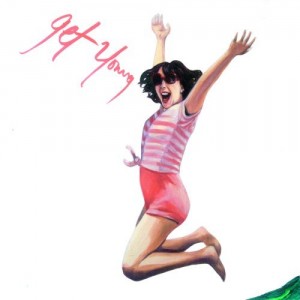Land of Talk – Some Are Lakes
Land of Talk is yet another band from Montreal, Canada, intent upon re-creating pop music in their own likeness and bringing it to your ears. Their latest effort, Some Are Lakes, has just been issued by Omaha label Saddle Creek Records.
According to press information, the opening three songs of the album seem to revolve around the band’s earlier sound, which seems to reflect the earthy undertones of the album’s title track. It is a female-dominated sound that recalls similarities between various Canadian acts that have made their way south of the border. While these first three tracks definitely showcase the band’s musical repertoire, there isn’t anything too remarkable from these first glimpses.
Then they come straight at you with “Some Are Lakes,” which features stronger vocals from front-woman/guitarist, Lizzie Powell. Here you will find the band cleaning out their sound, ridding the song of extemporaneous noise in place of a more direct approach to your ears. “Give Me Back My Heart Attack” has the band going back a few steps, those this song definitely has a stronger groove than the opening tracks present on the album.
“It’s Okay” is one of the simpler songs on the album. Picture Amy Millan singing along to piano ballads and you’ll get the picture for this one. The band pulls it off, but it’s not altogether very inspiring. Then the band seems to pick it up from here. Land of Talk pushes forward with more Canadian influences, but they do it this time with a certain brashness that makes it all seem more worthwhile; it comes off a lot more personal. At its best when they unleash their guitars, they pull them back momentarily for what is the album’s stand out track, “Got A Call.” As it sweeps in and out, it sweeps you away in the process.
After all that progress they sum it all up with an acoustic number that doesn’t seem to stray to far from the works of Feist, which is not necessarily a bad thing, it just makes the album feel entirely too uneven. Some Are Lakes is an album with varying levels of accomplishment, and those mainly come in the form of a band that let’s loose on the listener, releasing the power they seem to hold back for the majority of the album. It all ends without the band establishing itself as the predominant force in the music presented here, and they fail to step out of the shadow of the Canadian heavy hitters.













